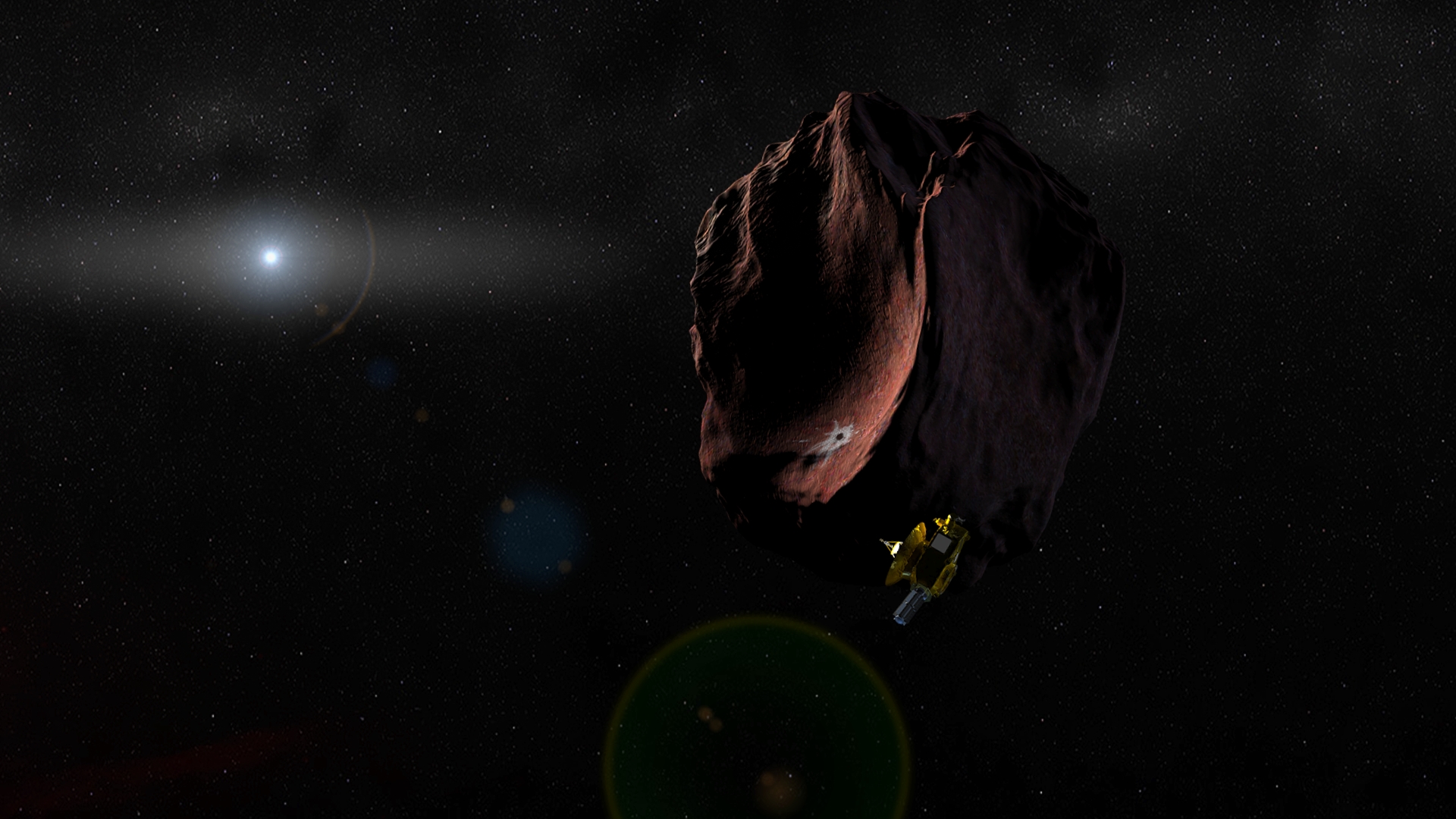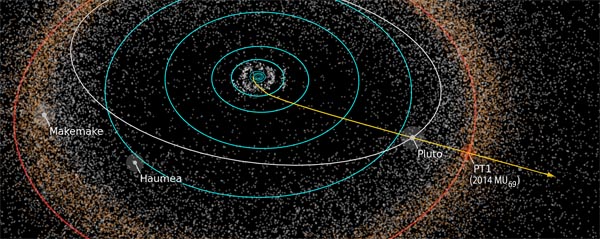
After providing the world with spectacular close-up images of Pluto and its icy moons in the summer of 2015, NASA’s New Horizons is zipping off into uncharted territory a billion miles away. On January 1, 2019, the spacecraft will fly past the most remote world ever explored by mankind. Dubbed (486958) 2014 MU69, the small frozen object, which lies in the Kuiper Belt, may help scientists reveal the origins of our solar system. To mark this historic event, the US space agency is asking the public to help find a nickname that is easier to remember than the elaborate moniker assigned by scientists.
To be considered, the nickname should not have any religious or political importance or be of commercial value. Also, though it can be serious, fun, or anything in between, it must be appropriate for the inaugural exploration of this distant world that lies at the outer edge of the solar system.

Image Credit: Credit: NASA/Johns Hopkins University Applied Physics Laboratory/Alex Parker)
Given that some experts think MU69 might be a binary – two objects pulled close by their common gravity — two nicknames suggestions are better than one. Should the icy bodies be joined, what scientists call “contact binary,” only one nickname will be needed. However, if they are separated by empty space, the second name will undoubtedly be useful. MU69 could also have some moons that need naming, but those will have to wait until New Horizons can confirm the details.
Those that can’t get their creative juices flowing can vote for one or more of the 15 names that are already in contention. They include Año Nuevo, (New Year in Spanish) to mark the day when New Horizons will be visiting the remote object, and Camalor, a fictional city of an alien species that lives on a small cold world similar to MU69. Also being considered is Patagonia, the region of Argentina and Chile where the scientists discovered its binary nature. Olaf, a Norse word which means relic or "ancestral heritage,” seems particularly appropriate given that MU69 is a relic from the time our solar system was formed.

All the suggestions and votes have to be submitted by December 1. NASA and the New Horizons team will then select and announce a winner in early January 2018. The winning entry will be used until the January 2019 flyby reveals more insight into the cold world. NASA will then work with the International Astronomical Union, responsible for naming space objects, to come up with MU69’s permanent, more formal, name.
Interested in helping NASA? Then go to www.frontierworlds.org and submit your proposed nickname, vote for one, or do both, before December 1. Be sure to let us know what you suggest, or vote for, by adding your comments below.
Resources: frontierworlds.org